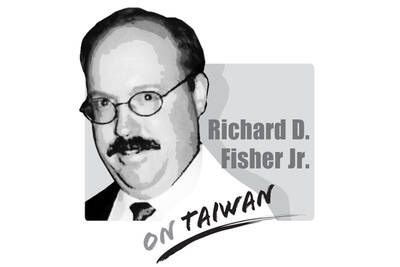Chances are, it is nothing.
However, if it is something, it is a big something.
Late last month, a group of researchers published two papers reporting an extraordinary discovery: a superconductor that works at normal temperatures and pressure. Dubbed LK-99, the material consists of the mineral apatite doped with copper atoms. Like conventional superconductors, the authors say, it can conduct electricity resistance-free — but, crucially, without the need for super cool or highly pressurized conditions.
Such a material, long theorized, has been dubbed the “holy grail” of the field.
In the days since, there has been a scramble to confirm the results. Two theoretical analyses concluded that the authors’ claims were at least plausible. Dozens of other teams are trying to replicate the feat experimentally. Among practitioners of materials science and condensed-matter physics — at least those expressing themselves online — something close to giddiness has taken hold.
Caution is wise nonetheless. Neither paper has yet been peer-reviewed, while both seem to omit key facts. Some experts have called the experiment “sloppy.” Many others have voiced skepticism. Notoriously, the field has long been plagued by hype and false hopes (A study published in Nature in 2020, making claims of a similar breakthrough, was retracted last year).
And yet, and yet. The implications of such an achievement — if replicated — would be profound. Almost overnight, the scientific landscape could change. The superpower of superconductors is that electricity moves through them without losing energy to resistance — provided they are cooled to (say) minus-195°C and subjected to colossal pressure. A room-temperature version could be deployed cheaply and widely, revolutionizing fields from energy to transportation to computing.
Take the power grid. Using superconducting materials, energy loss from generating and transmitting electricity — currently an immense challenge — could be eliminated, thereby slashing costs and reducing emissions. Wind and solar power could be stored indefinitely. Battery life could be extended for laptops, phones, electric cars. More tantalizingly, nuclear fusion — that long-elusive source of carbon-free baseload energy — could start to look commercially viable as room-temperature superconductors enabled smaller and less costly reactor designs.
There is more. Levitating trains, gliding above superconducting rails, could become commonplace. Medical imaging devices could become smaller, cheaper and more precise. Practical quantum computers — with potential to accelerate everything from drug design to climate science — might become more feasible, thanks to improved accuracy and performance. In fact, almost any technology relying on electromagnetic processes could be transformed.
On the other hand, LK-99 might come to nothing. Sometimes things that seem too good to be true are just that. Such is the nature of scientific progress: trials and errors, triumphs and setbacks. It is a process that rewards risk, ambition and — every once in a while — off-the-wall optimism. In this case, it might well change the world as we know it.
The Editors are members of the Bloomberg Opinion editorial board.
We are used to hearing that whenever something happens, it means Taiwan is about to fall to China. Chinese President Xi Jinping (習近平) cannot change the color of his socks without China experts claiming it means an invasion is imminent. So, it is no surprise that what happened in Venezuela over the weekend triggered the knee-jerk reaction of saying that Taiwan is next. That is not an opinion on whether US President Donald Trump was right to remove Venezuelan President Nicolas Maduro the way he did or if it is good for Venezuela and the world. There are other, more qualified
China’s recent aggressive military posture around Taiwan simply reflects the truth that China is a millennium behind, as Kobe City Councilor Norihiro Uehata has commented. While democratic countries work for peace, prosperity and progress, authoritarian countries such as Russia and China only care about territorial expansion, superpower status and world dominance, while their people suffer. Two millennia ago, the ancient Chinese philosopher Mencius (孟子) would have advised Chinese President Xi Jinping (習近平) that “people are the most important, state is lesser, and the ruler is the least important.” In fact, the reverse order is causing the great depression in China right now,

This should be the year in which the democracies, especially those in East Asia, lose their fear of the Chinese Communist Party’s (CCP) “one China principle” plus its nuclear “Cognitive Warfare” coercion strategies, all designed to achieve hegemony without fighting. For 2025, stoking regional and global fear was a major goal for the CCP and its People’s Liberation Army (PLA), following on Mao Zedong’s (毛澤東) Little Red Book admonition, “We must be ruthless to our enemies; we must overpower and annihilate them.” But on Dec. 17, 2025, the Trump Administration demonstrated direct defiance of CCP terror with its record US$11.1 billion arms
The immediate response in Taiwan to the extraction of Venezuelan President Nicolas Maduro by the US over the weekend was to say that it was an example of violence by a major power against a smaller nation and that, as such, it gave Chinese President Xi Jinping (習近平) carte blanche to invade Taiwan. That assessment is vastly oversimplistic and, on more sober reflection, likely incorrect. Generally speaking, there are three basic interpretations from commentators in Taiwan. The first is that the US is no longer interested in what is happening beyond its own backyard, and no longer preoccupied with regions in other